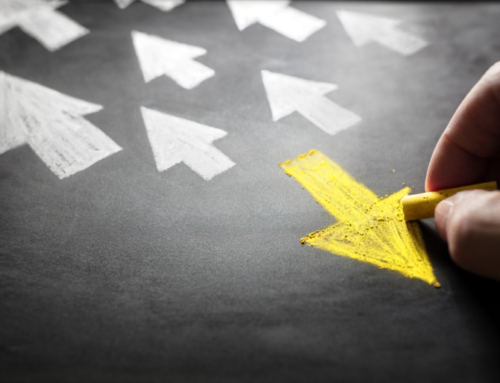In today’s post I discuss the concept of the lifeworld and how it is relevant to psychiatric understanding and care.
The Concept of the Lifeworld
The lifeworld or lebenswelt in German, is a concept popularized by phenomenologist Edmund Husserl, who wrote about it mostly in the 1930s, and taken up by other philosophers and sociologists, such as Jurgen Habermas and Alfred Schutz. The lifeworld refers to the world as it is constituted and experienced by subjects, that is, by human beings who experience themselves as individual selves and as inhabiting a world. Under normal circumstances, the way people experience the world is automatic and pre-reflective and usually taken for granted. How things work and how to navigate the world is usually already understood without having to think about it. A person’s day-to-day experience of their lifeworld is based both on features more or less shared with others (the contours of the physical world and the sociocultural milieu) and on features personal to each person (their history, background assumptions and core beliefs, temperament and personality, life goals and values, people they interact and have affinity with, the personae they adopt, and others).
The lifeworld is not the same as the physical world; it is both less and more than that. For example, there are many features of the physical world that are absent from subjective awareness. For example, for years I passed a certain restaurant on my way to work and never even noticed it; once I did, it became one of my favorite places to eat lunch. It was not part of my lifeworld, until it was. Conversely, my lifeworld is more than the physical world and includes my sense of what is relevant to me; the emotions I have and associate with various people, places, and situations; and the narratives I tell myself about myself, my future, and the world as I experience it. My lifeworld also includes the invisible forces of sociocultural norms, rules, expectations, ways of behaving, and so forth. Husserl described the lifeworld as:
“In whatever way we may be conscious of the world as universal horizon, as coherent universe of existing objects, we, each “I-the-man” and all of us together, belong to the world as living with one another in the world; and the world is our world, valid for our consciousness as existing precisely through this ‘living together’.”
People change across their lifespan and the state of their lifeworld changes too, sometimes in adaptive and enriching ways (leading to a good life), and sometimes in maladaptive and diminishing ways (leading to an unhappy, unfilled, and constrained life). It is when the latter occurs that the lifeworld becomes relevant to psychiatry.
Lifeworld in Psychiatric Care
This concept of lifeworld is especially pertinent in today’s times. There are many forces that recently have led to greater disruptions to people’s lifeworlds; they include the rise of social media, cultural-political polarization, and occurrence of the covid pandemic with societal responses to it. (In other parts of the world, war and the fear of war are of greater concern.)
To focus on the pandemic’s effects: the pandemic affected people’s lives in many ways, with the weight of the changes for most people being decidedly negative. It is these lifeworld disruptions that are partially responsible (I think) for the higher rates of depression, anxiety, and general malaise that have occurred. A person’s lifeworld sustains their mental stability when it is stable and generative, and it disrupts their mental stability when it is disrupted, diminished, or stress-inducing.
The two age groups who, I believe, experienced the most notable and negative changes due to the pandemic were youth and the elderly. In my family we dealt with the problems both these groups experienced. All three of my kids at the time of the pandemic were in school – one in middle school and two in college. The three have bounced back and seem none the worse for wear. On the other end of the age spectrum, the pandemic really affected my elderly mother and her husband, who never fully recovered afterwards, even though neither was infected with the virus.
The elderly had higher morbidity and mortality rates from contracting covid and, because of these higher covid-associated risks, were more conscientious about maintaining social distancing. This social distancing often led to dramatic diminishment of their lifeworlds, however. The elderly, at the same time as being at higher risk of poor outcomes from covid, are also (and always have been) at higher risk of cognitive decline and frank dementia. Because most neurodegenerative diseases that cause cognitive dysfunction and dementia (like Alzheimer’s disease) begin years or decades earlier, an elderly person is susceptible to the development of (or faster declines in) cognitive dysfunction in response to disruptive life changes. What often helps a person undergoing neurodegenerative changes maintain stable function is the series of life-sustaining and life-organizing routines they maintain in their daily lives. These features include regular daily habits and routines, regular social interactions, and engagement in productive activities that require sustained cognitive effort and focus. In order to maintain their safety from the pandemic, many elderly people became isolated in their own homes.
Some people were literally trapped in their own homes, even when struggling to maintain self-care, due to the risks of transferring into assisted living facilities which, because of the greater number of people living and working there, were much higher risk environments. For the many elderly people who would otherwise have transferred into assisted living but did not, they ended up with much diminished contact with people and need to maintain instrumental activities of daily living. So, instead of driving to the grocery store, venturing forth to purchase groceries and other products, interacting with people there, and coming home to cook dinner, many people had prepared meals delivered to them. It was the right thing to do, but it came with a cost. Once these instrumental activities of daily living were discontinued, they tended to never fully come back later. What happened to many elderly people during this period of isolation is they suffered swift declines in cognitive and instrumental functions.
I discussed only one aspect of how the lifeworld can be disrupted. But what are the broader implications of these types of lifeworld disruption for psychiatric care? I’d love to hear what you think of this. For me, thinking about the lifeworld makes me take a different view of my role as a clinician. I do not think about a patient coming in for treatment as a person in isolation from their lifeworld. The ‘unit’ of concern and evaluation for me is not the isolated individual but the individual ensconced in the world they live in and experience. I’m interested in learning of a person’s depression or anxiety, of course, but I’m as (if not more) interested in why they’re depressed or anxious and how they live their lives. I’m interested in learning what happened to their lifeworld that triggered their mental health problems. Sometimes, my psychiatric intervention focuses on the person-in-isolation (as, for example, when I ask them to swallow a pill every day or to challenge their beliefs) and sometimes on the person-navigating-their-lifeworld (as, for example, when I guide them through behavioral activation techniques so they can enrich their lifeworld and navigate it more successfully).
Thanks, and let me know what you think of this and which topic you would want me to cover in future posts.
Dr. Jack
Language Brief
“Life is not lost by dying; life is lost minute by minute, day by dragging day, in all the small uncaring ways.” ― Stephen Vincent Benet
“I wish that life should not be cheap, but sacred. I wish the days to be as centuries, loaded, fragrant.” ― Ralph Waldo Emerson
“The way you see the world is how you live it.” ― J.R. Rim
“We travel, some of us forever, to seek other states, other lives, other souls.” ― Anais Nin







Leave A Comment